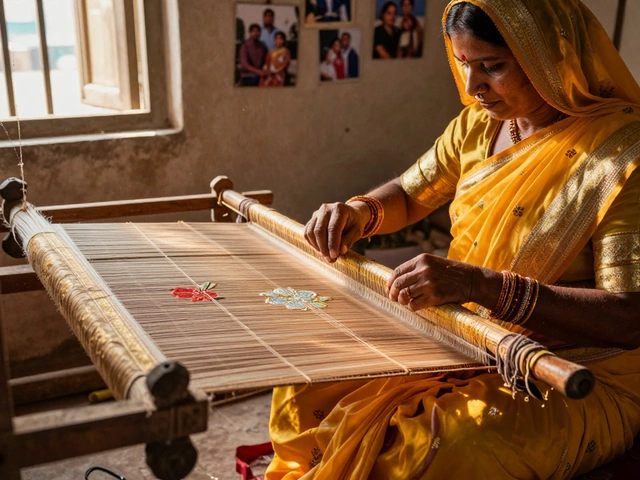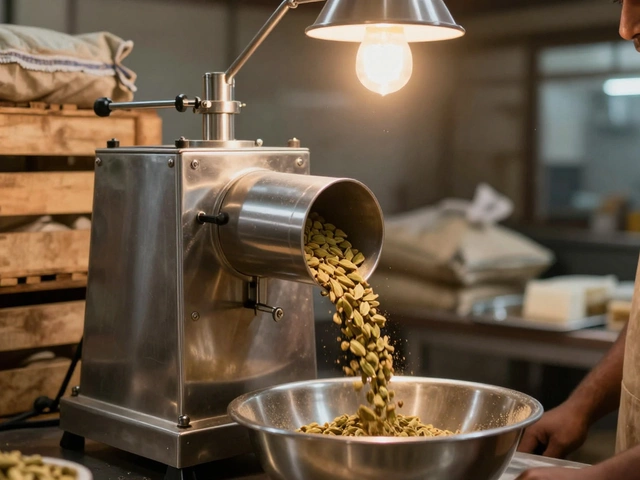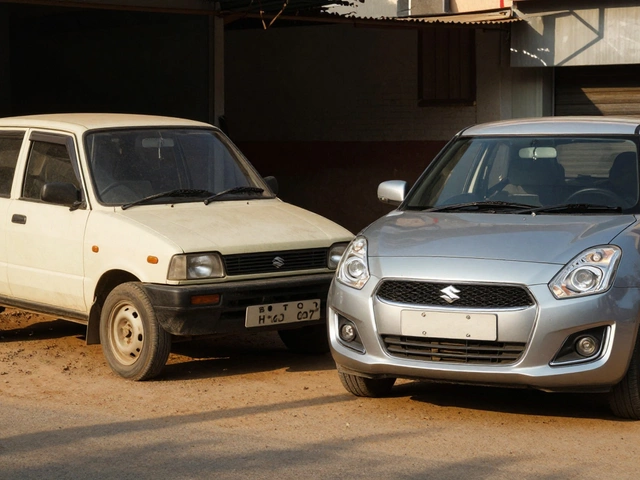Most Profitable Textile Businesses: Top Ideas & Niches for High Returns

If you scroll through any major city, from Sydney to Istanbul, textiles are everywhere—on billboards, in shop windows, on the backs of folks sipping flat whites. But one thing keeps most newcomers up at night: which textile business actually brings in the best profits? Spoiler alert: not all threads are spun equally when it comes to making cash. Some segments rake in dollars per metre, while others seem to run just to stand still. There's serious money in certain textile corners, but the winners might surprise you. The real question isn't just "how to make money in textiles," it's "where are margins big enough to fatten your wallet without being gobbled up by competition or tech disruption?"
Understanding the Textile Industry: More Than Just Fabric
Most people think of textiles and picture clothes—T-shirts, jeans, dresses. That’s just the tip of the iceberg. The textile world is immense, with global revenue projected to top USD 1.7 trillion in 2025, according to Statista. But when you drill down, you’ll see an ocean of opportunity beyond fashion: technical textiles (stuff like geotextiles, medical textiles, composites for airplanes), home textiles (sheets, towels, curtains), and industrial fabrics (car seatbelts, conveyor belts, filtration products).
The fashion/apparel segment grabs the limelight because of its sheer size. Brands like Zara, H&M, and Uniqlo churn out fast fashion by the truckload in countries with lower labor costs. But profits? That’s another story. Apparel is crowded—hundreds of factories fighting for contracts, racing to the bottom on price. Margins can be razor-thin unless you’re running a recognizable brand or a niche operation with a loyal customer base.
Technical textiles, on the other hand, barely make a blip in the average shopper’s mind. Yet, they're quietly exploding. According to the Indian Technical Textile Association, demand for technical textiles is growing at more than 6% year-on-year globally, much faster than basic apparel. Think high-tech: fabrics for car airbags, hospital gowns, bulletproof vests, and filter membranes. Fewer players, more specialization, and customers who care more about performance than price—yes, these mean higher margins.
Home textiles also have their fans, especially with the rise of online home décor brands. The pandemic got everyone cozying up their living rooms, and that trend hasn’t gone anywhere. Bedding and towels, especially when branded or certifiably eco-friendly, can fetch premium prices.
Check out just how much this sector sprawls. Here’s a breakdown:
| Textile Segment | Notable Products | Avg. Gross Margin (%) |
|---|---|---|
| Apparel/Fashion | T-shirts, jeans, dresses | 5-15 |
| Technical Textiles | Medical, automotive, geotextiles | 20-40 |
| Home Textiles | Bedding, towels, curtains | 10-20 |
| Industrial Fabrics | Filters, belts, composites | 20-35 |
| Specialty Fabrics | Fireproof, waterproof, anti-microbial | 25-45 |
So the first step for anyone chasing profit is understanding which segment suits their skills—and how deep their pockets are for startup capital. Setting up mass apparel production costs millions; a niche technical textile unit can start smaller, but you'll need know-how and maybe a science background. Each slice of the textile pie has its own quirks, risks, and payoffs.
The Profit Stars: Top-Grossing Textile Business Models
If you chase pure numbers, technical textiles keep popping up as the new gold rush in the fabric world. Take medical textiles—fabric that goes into things like surgical masks, wound dressings, or hospital bedding. The COVID-19 pandemic shot demand for these products through the roof, and even after the initial mad rush has faded, hospitals, labs, and clinics still burn through mega quantities of disposable and reusable gear. Companies like Freudenberg and Ahlstrom-Munksjö (both huge in the nonwovens niche) posted their best margins ever in 2020-21, with returns comfortably outpacing the apparel sector.
Then there’s automotive textiles: airbags, seatbelts, seat covers, filtered cabin materials. Electric and connected cars are piling on new requirements—antimicrobial seat fabrics, “smart” textiles that heat or cool on demand. If you can crack the code to become an approved supplier for an automotive giant, you’re sitting on a recurring income stream. These contracts typically lock in high volumes for several years and require tight quality control—but the margins are solid, and the volumes can be huge.
Fashion gets all the Instagram likes, but the untold story is in performance textiles. Check out companies like Gore-Tex: their fabrics power waterproof jackets, hiking boots, firefighter uniforms, and even medical implants. Their R&D focus lets them sell at high prices, with customers who return because the gear just works. Smaller D2C (direct-to-consumer) brands are also eating up niche space—think of retailers specializing in bamboo socks, hemp T-shirts, or even underwear with silver threads for odor control. Consumers are paying premium prices for function and sustainability, not just fashion.
The "green" scene is another goldmine. Recycled PET fibers pulled from plastic bottles, Tencel and modal from wood pulp, organic cotton, and “upcycled” denim offcuts—sustainable materials have both high margins and loyal followers. Retailers like Patagonia, Allbirds, and even big brands like Levi’s are cashing in. Setting up a brand centered around environmental responsibility or transparent sourcing can give you a leg up, as customers are willing to shell out more for guilt-free (and often better quality) clothing or home textiles.
But don’t discount home textiles if you want stability with your profits. Sheets, duvets, and towels rarely go out of style. Even when fashion cycles crash and burn, people need to sleep somewhere every night. Companies like Sheridan and Adairs (both loved in Australia) have been quietly growing their premium bedding lines using organic or specialty cotton, and the profits keep rolling in. A good set of luxury sheets is often marked up at five times the manufacturing cost, especially when the story says "Australian-grown cotton" or "eco-certified."
For those eyeing rapid, scalable businesses (but don't want a cutthroat race), custom or on-demand printing services are booming. Digital textile printing (think: one-off fabric for crafters, quirky custom tees, or corporate branded gear) has seen 12-14% annual growth over the past few years. While high-volume players are investing in giant printers, even garage-level startups are making tidy sums after partnering with Etsy or Shopify shops for drop-shipped merchandise. The beauty? Low inventory risk—no more mountains of unsold stock cluttering your space.

Startup Tips: Turning Textile Ambition into Steady Profits
Knowing which niche to target is step one. Step two is figuring out how to actually make money without drowning in risk or red tape. If I were starting up right now in Sydney, this is what I’d keep front-of-mind.
First, lean on automation as much as possible. Labor is a killer, especially in countries like Australia where wages are high. Computer-controlled looms, automatic dyeing machines, and robotic cutting save a fortune over time. High upfront costs? Yes, but the ROI is real—especially when you compete with Asian manufacturers on quality, speed, or customization, not price alone.
Second, always test the market with a pilot batch. Don’t throw hundreds of thousands into fancy equipment or branding before you know who will buy what you’re selling, at what price. There’s nothing worse than being stuck with five tonnes of tie-dye polyester no one wants. Sites like Kickstarter and Indiegogo are your friend—put your idea out there, and see if real people are actually willing to pay.
Third, build supply chain flexibility. The pandemic taught us all about the importance of having suppliers close by, as well as alternatives for each key ingredient—yarn, dyes, chemicals. If you can buy local, do it. It might cost more today, but when your overseas supplier grinds to a halt, you’ll be the last one left selling.
Fourth, take certifications seriously, especially for technical or eco-friendly textiles. Getting OEKO-TEX, GOTS, Fair Trade, or ISO marks isn’t just about pleasing inspectors. Big retailers demand them, for both safety and “green” marketing. They’ll pay premiums for certified goods because customers trust the badge. These certifications open doors to new markets and bigger wholesale deals.
Fifth, engage directly with buyers. Traditional wholesalers and dealers still exist, but online and D2C channels can fatten margins by 15-25%. Shopify, Etsy, Amazon, and even TikTok Shops let a one-person textile outfit reach the whole globe—no need for middlemen eating into your profits.
- Automate early and often to cut labor costs and boost precision.
- Use market tests to prove real customer demand before scaling up.
- Secure multiple suppliers—never rely on just one.
- Get certifications for your niche (OEKO-TEX for safety, GOTS for organic, etc).
- Sell direct where possible for bigger profits and customer data.
One thing people often miss? IP and design rights are huge. If you create a new fabric finish, a cool print, or technical innovation, file for protection early, especially if you’re near a big market like the EU, US, or China. This is what separates sustainable profit from one-hit wonders.
And finally, network like crazy. Join textile industry associations, hit up trade expos, talk to machinery reps. So many stories of people landing million-dollar contracts come down to simply being in the right room or replying to LinkedIn messages. The textile industry is relationship-driven, and that will never change.
What the Future Holds: Trends Shaping Textile Profits
Textiles are ancient, but the profit landscape is anything but old-fashioned. Three huge shifts are reshaping the landscape—sustainability, customization, and digitalization. Each one is a potential moneymaker for fast movers.
First, sustainability isn’t just a buzzword now: it’s table stakes. Regulators in Europe, Australia, and soon India are cracking down on microplastics and "fast fashion landfill". Eco-friendly fibers, along with closed-loop systems (where used clothes or scrap fabric get recycled into new yarns), are drawing both investor cash and loyal customers. Companies that switched to recycled cotton or polyester in the last five years are seeing market shares grow faster than traditional players stuck in the old ways.
Customization and "micro-brands" are also surging. Instead of buying generic bulk T-shirts, people want limited-edition drops, one-off prints, or items tailored just-for-them. Mass customization technology—digital printing, 3D knitting, even AI-powered design—is booming. Even Nike lets you design shoes with custom fabrics now, and this trend is filtering down to much smaller players. The more unique and personal the product, the higher the perceived value—and the better your *profit margins*.
Digitalization is flipping the script on how fabrics are designed, produced, and sold. AI-driven trend forecasting, robotic weaving, and even blockchain for supply chain transparency are making old-school manufacturers wake up or get left behind. Direct-to-consumer “digital native” brands are bypassing old distribution entirely, often running leaner operations with much higher gross profits. If you’re tech-savvy, there’s real cash to be made in marrying software with fabric.
The industry’s regional center of gravity is also shifting. Countries like Bangladesh and Vietnam may still dominate basic apparel, but Europe, Japan, Korea, Australia, and the US are grabbing techwear, smart textiles, and “green” clothing. Australian cotton brands, for example, are pushing traceability and quality, often exporting value-added products to premium markets at double or triple the prices seen in fast-fashion hubs.
The bottom line: the *profitable textile business* isn’t always the one with the lowest costs or the biggest factory. Instead, it’s the one that finds its sweet spot—a happy place between technical know-how, market demand, supply chain agility, and a story that customers want to buy into. The barrier to entry can be high, especially in cutting-edge niches, but the financial payoff for getting it right is enough to turn a small workshop into a thriving international player.





